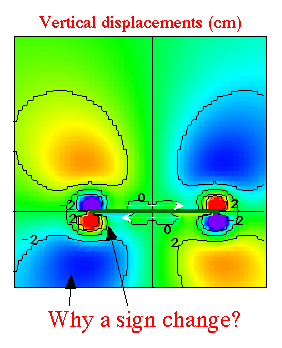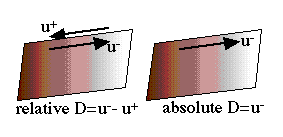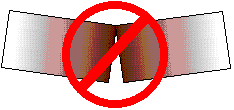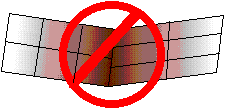
Pitfalls, Advice

* Start simple! Even the simplest models can generate deformation fields that are very counter-intuitive; it's best to understand these before daring to try complex models. For example,

* Remember the difference between ABSOLUTE and RELATIVE displacements.

* Avoid observation points at element edges because the stresses are singular there. This may happen inadvertantly when generating output on a gridded plane or volume.
* Discretize with care. The numerical approximation in boundary-element modeling comes from the fact that one approximates boundary conditions on a surface by specifying them only at a finite number of discrete points. We know of no rigorous way to determine the optimal discretization. One approach is simply to start with a coarse, but intuitively reasonable discretization and to sub-divide it until the deformation no longer changes significantly. This process and the meaning of 'significantly' depends highly on the problem being solved.
* When modeling a single surface using several planes be sure the edges of adjacent planes are shared exactly by both planes. The stress singularities along the edges of each plane will cancel, but only if they're truly the same edge.


Cancelation will not be exact if the sub-element corners along the shared edges aren't also co-located.


![]()